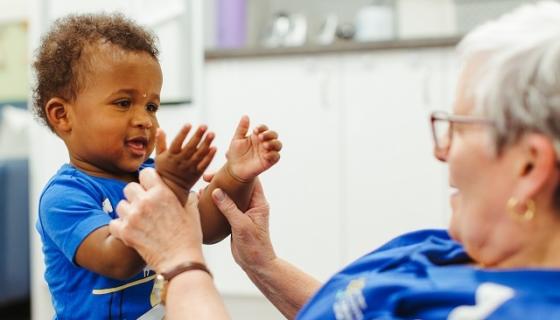
Case study: continuous improvement at Seaton Community Children's Centre
The move from a Working Towards NQS rating to a Meeting one can sometimes require improvement in just one area. Seaton Community Children’s Centre found this at their recent assessment and rating.
Seaton Community Children’s Centre was rated as Working Towards NQS in 2019. But they weren’t content to stop there.
The educator team has since reflected on their practices and, by working together to improve their service, are very happy to have achieved a Meeting rating this time.
Director Carrie Johnson explained that, for one, they’ve worked hard to refine how they document children’s learning and experiences.
“Our documentation had gaps in it,” Carrie said. “There were also questions about the quality of the documentation”.
But they’ve worked extensively on this.
Carrie took charge of the planning by providing educators with a format that supported the cycle of planning. During the educators’ regular planning time they utilised the format to document the children’s learning, which also highlighted their knowledge of the children.
Every child has their own portfolio, and this has evidence of learning added to it frequently. When children are away due to illness or other absence this is recorded to ensure there is an explanation of why documentation is not available and ensures the amount of documentation is reflective of their time in attendance
The service engaged in regular professional learning with Gowrie SA to provide opportunities for deeper critical reflection.
"Having their team fill the role of critical friend supported us to think outside the box and challenge current practices," said Carrie.
They appointed the early childhood teacher as their educational leader to oversee the educational program.
One part of the educational leader role is to support educators to assess and document children’s learning. The educational leader “goes through everyone’s folders and checks if there are any gaps, and provides written feedback to educators,” said Carrie. This process has encouraged professional conversations which has led to greater reflection and improvements.
The improvements made at Seaton Community Childrens Centre were demonstrated at the assessment and rating and a Meeting rating achieved, recognising the quality service provided.
Providing a quality service is important to this group of educators. Carrie said at the service it means “all children are seen at the service and have a relationship with their primary care-giver”. She said this “supports the relationship-based care” they provide.
They also have a very low staff turnover and make a considered choice to not use agency staff, and strive to have casual educators working in the same rooms. This is to “focus on the continuity of care” and provide the “opportunity for children and educators to create relationships”.
Seaton Community Children’s Centre strives to offer a flexible service to meet the needs of its community, this includes providing half-day places for children over two.
A strength of the service, said Carrie, is that educators “do genuinely see children as capable and competent”. They provide children with opportunities to be heard in the choices provided.
“We encourage children to advocate for their interests. And a flexible routine also allows children of any age to rest in a sleeping hub we've created, to support children to develop their awareness of their needs.
“The routines are based on children’s needs,” said Carrie, ensuring a child-centred program which maximises opportunities for learning.
While Seaton Community Childrens Centre is thrilled with the new rating, Carrie said they view continuous improvement seriously.
“We’ve taken on board the authorised officer’s feedback and continue to think of ways we can improve.”
For info on preparing for assessment and rating visits:
- Self-assessment tool for centre-based care, Education Standards Board
- Self-assessment tool for family day care, Education Standards Board
- Self-assessment tool and QIP template, ACECQA

